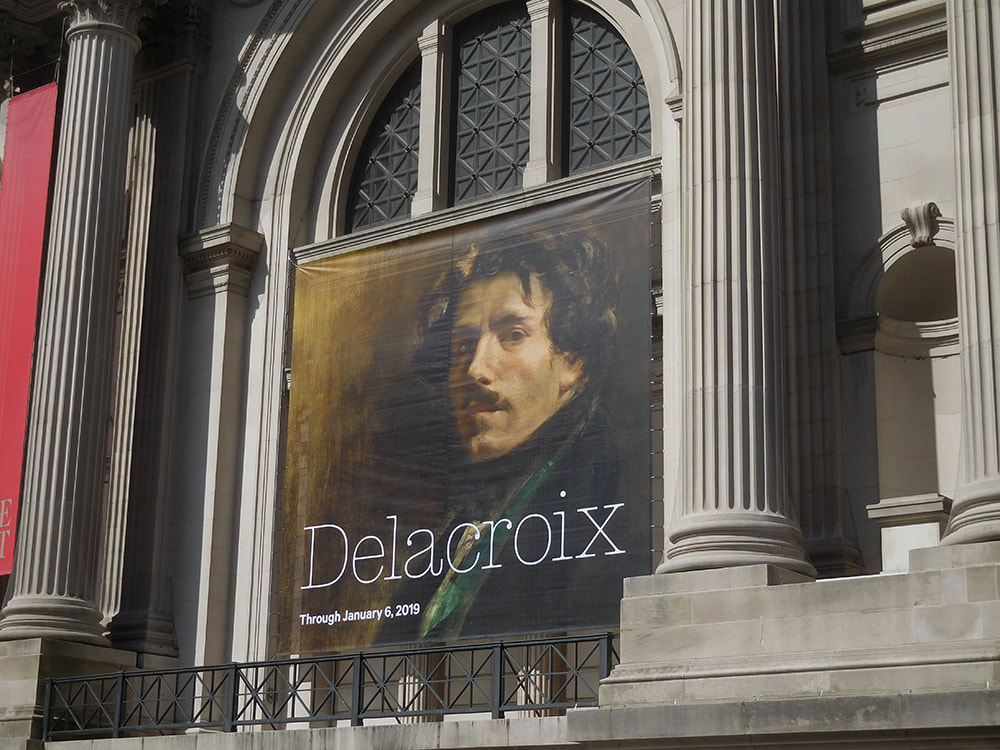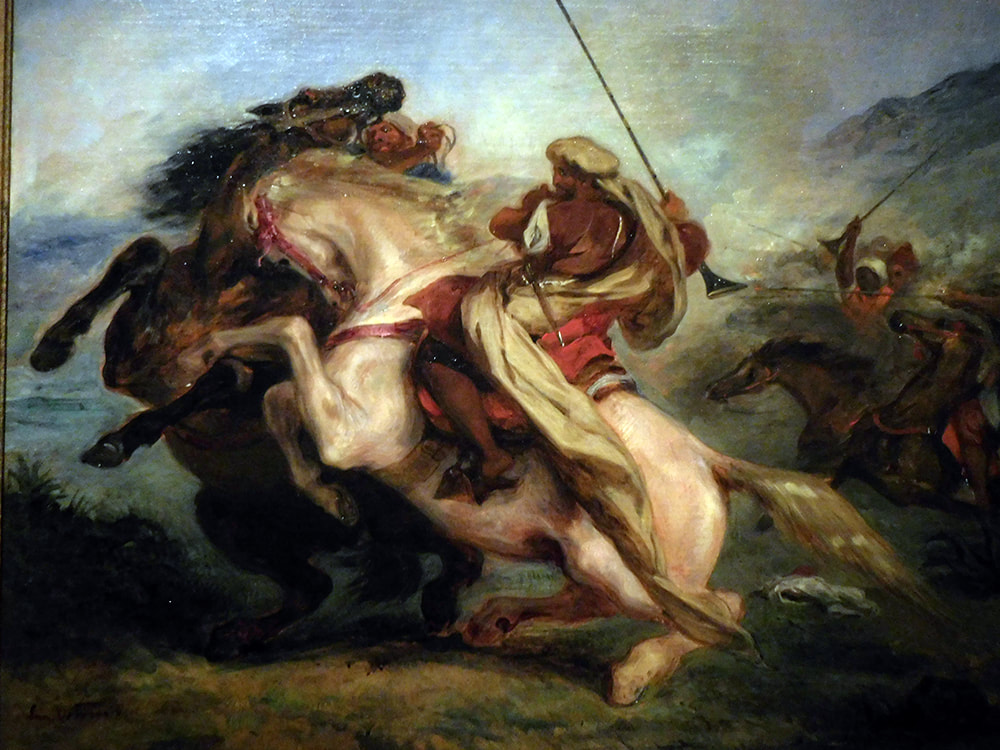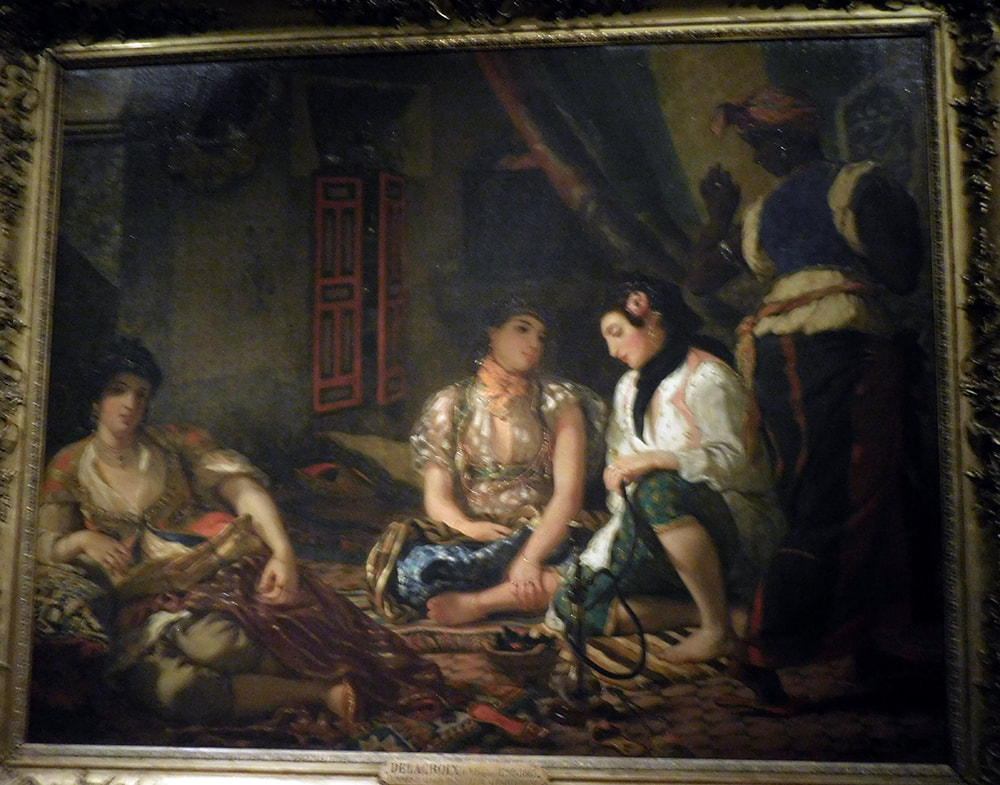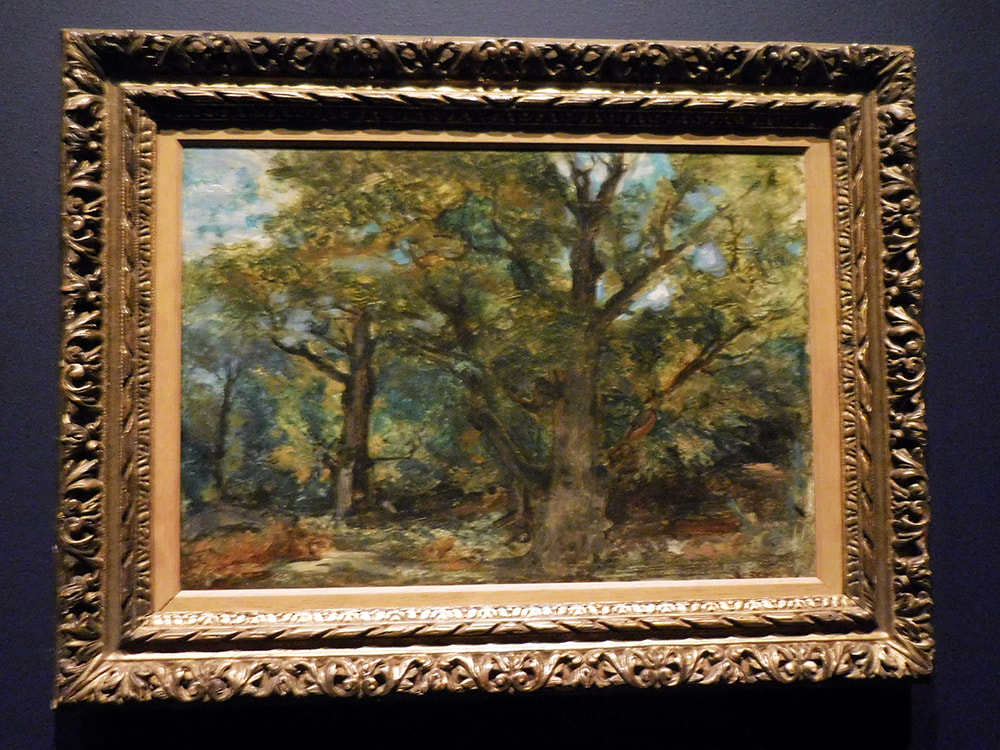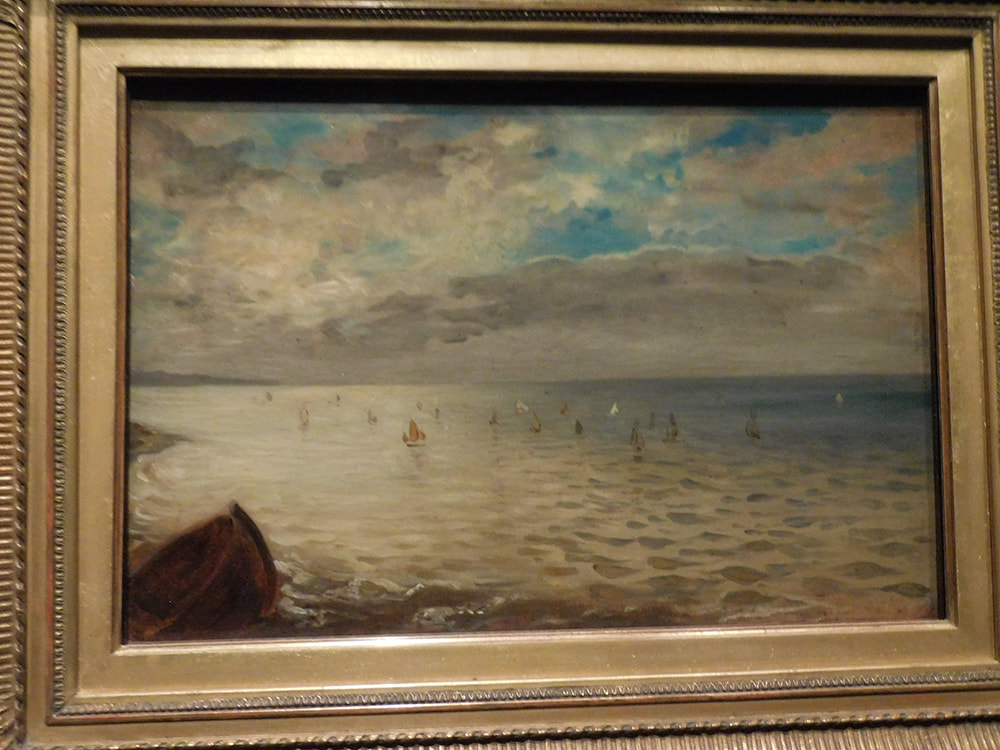"Delacroix" “Delacroix” at the Metropolitan Museum of Art in New York City is an in-depth retrospective of the works of the French Romantic artist Eugene Delacroix (1798 -1863). Organized in connection with the Louvre, the exhibition presents some 150 paintings, drawings and manuscripts. This is an important exhibition but not a simple one. It presents the work of a major artist but challenges the viewer to go beyond surface appeal to understand the work's significance.
The reason that the work of Delacroix deserves so much attention from two of the world's greatest museums is because Delacroix was a transformative painter. Inspired by the Romantic poets of the early 19th century, Delacroix injected emotion into his art. This can be seen in his brushstrokes and in his choices of color. This opened the door for later artists such as the Impressionists and even Picasso. Delacroix was born into a distinguished family in Napoleonic France. Indeed, contemporary rumor had it that his real father was Napoleon's foreign minister Prince Tallyrand. Orphaned when he was still a teenager, a benevolent uncle encouraged Delacroix to pursue a career in art. He never married but is said to have had a succession of affairs with various women including some of his models. His artistic career is full of contradictions. He followed the prescribed route to become a successful artist - - he went to art school and then worked in the studio of an established artist. However, he developed his own unique style. His works were accepted for exhibition at the Salon, the bastion of the 19th century art establishment. However, it took him seven tries before his application for membership was accepted. His unorthodox style was frequently criticized, yet he received commissions from both the government and the church. The exhibition at the Met presents Delacroix's career in a roughly chronological fashion. The works are grouped into three phases. In the first phase, Delacroix is trying to establish himself as an artist. Not just a successful artists but a top artist. Two monumental paintings “Greece on the Ruins of Missolonghi” and “Christ in the Garden of Olives” illustrate the young artist's skill. The former is an allegory about the Greek War for Independence while the latter is a Biblical subject. Consistent with Delacroix's view that exhibiting works at the Salon was the road to success, both of these works were exhibited at the Salon and reflect the type of works that appealed to the art establishment of the day. Perhaps more interesting are the series of portraits in the next gallery. These were of people Delacroix knew or admired and seem less designed to conform to public taste. Of these, “Self-portrait in a Green Waistcoat” is the most revealing both in what it shows of the subject and in its style. In the second phase, Delacroix has achieved success and is striving to master technique and materials. We see the prints that he created to illustrate Goethe's Faust. We also see his interest in painting animals. There are also a number of monumental history paintings illustrating battles both actual and fictional. During this period, Delacroix accompanied a diplomatic mission to Morocco and North Africa. The country and its people fascinated him. He felt he had been transported back into ancient times. Accordingly, he produced numerous paintings and drawings. His “Collision of Arab Horseman,” based upon a military exercise he witnessed, is full of motion and flowing color. It was too innovative for the Salon, which refused to exhibit it. A work that the Salon did accept, however, was the monumental “Women of Algiers In Their Apartment.” This work was based upon a visit to a harem that Delacroix made while in North Africa and shows a group of women in North African clothing talking. It is exotic but not erotic. The painting was revolutionary both in Delacroix's technique and in the fact that it did not illustrate a narrative. At that time, the convention was that large paintings should illustrate a historical event, a piece of literature or the Bible. By just showing an everyday scene on a large canvas, Delacroix broke with the convention and opened a door for future artists. In the final phase, Delacroix became interested in floral arrangements and in landscapes. At that time, the art world had a hierarchy of subject matter with history paintings occupying the top position. Still lifes and landscapes were low on the hierarchy. The fact tht an artist of Delacroix's stature was interested in these subjects helped to make them more acceptable and again opened a door for the future. The exhibition concludes with “The Lion Hunt,” which was painted for Delacroix’s triumphant retrospective at the Exposition Universelle of 1855. It shows a group of Arab soldiers struggling - - not very successfully - - with a pride of lions. Although it is a massive picture, it is actually only a fragment as the top was destroyed in a fire. Nonetheless, it is an impressive work that ties together several of the themes in Delacroix's career including his interests in animals and in North Africa. In addition, it shows Delacroix's virtuoso use of color and ability to capture motion. As discussed earlier, Delacroix was an innovator and blazed new paths that influenced later artists. However, his followers have taken art so much further that Delacroix's work no longer seems as rebellious as it appeared to 19th century eyes. Indeed, it now only appears different in degree rather than kind from the 19th century establishment. As a result, the works that so impressed 19th century audiences may have difficulty resonating with modern viewers. At the same time, Delacroix's freer, more loose works, such as his landscape sketches, which were done for the artist's own use rather than with an eye toward exhibiting them at the Salon, are more likely to be more appealing to today's viewer. See our review of the related exhibition of Delacroix's drawings "Devotion to Drawing" |
Two works from Delacroix's journey to North Africa. Above: "Collision of Arab Horsemen."
Below: “Women of Algiers In Their Apartment.” Two of Delacroix's later works. Above: "View in the Forest of Senart."
Below: "The Sea at Dieppe." |
Art review - Irish Museum of Modern Art - "Freud Project: The Ethics of Scrutiny, Curated by Daphne Wright”
